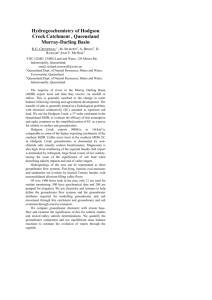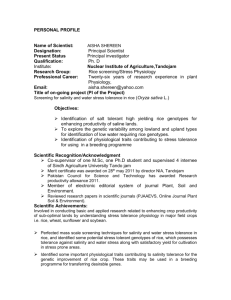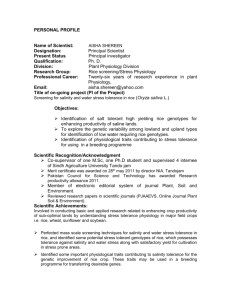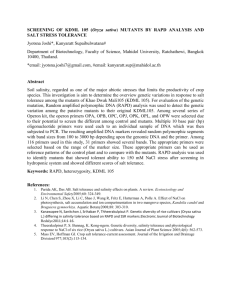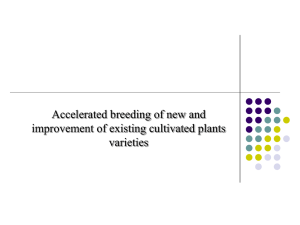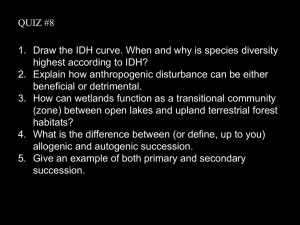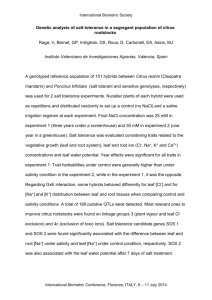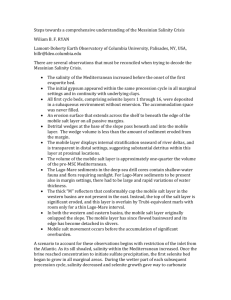In Vivo Salt tolerance of Giant Swamp Taro Cyrtosperma merkusii
advertisement
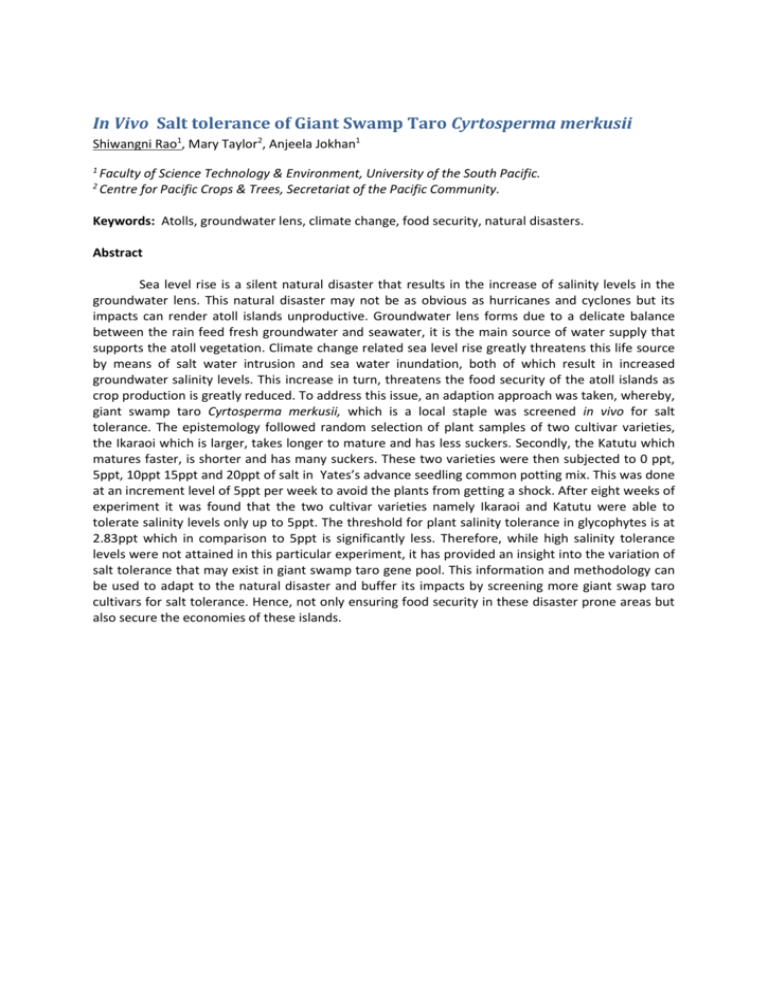
In Vivo Salt tolerance of Giant Swamp Taro Cyrtosperma merkusii Shiwangni Rao1, Mary Taylor2, Anjeela Jokhan1 1 2 Faculty of Science Technology & Environment, University of the South Pacific. Centre for Pacific Crops & Trees, Secretariat of the Pacific Community. Keywords: Atolls, groundwater lens, climate change, food security, natural disasters. Abstract Sea level rise is a silent natural disaster that results in the increase of salinity levels in the groundwater lens. This natural disaster may not be as obvious as hurricanes and cyclones but its impacts can render atoll islands unproductive. Groundwater lens forms due to a delicate balance between the rain feed fresh groundwater and seawater, it is the main source of water supply that supports the atoll vegetation. Climate change related sea level rise greatly threatens this life source by means of salt water intrusion and sea water inundation, both of which result in increased groundwater salinity levels. This increase in turn, threatens the food security of the atoll islands as crop production is greatly reduced. To address this issue, an adaption approach was taken, whereby, giant swamp taro Cyrtosperma merkusii, which is a local staple was screened in vivo for salt tolerance. The epistemology followed random selection of plant samples of two cultivar varieties, the Ikaraoi which is larger, takes longer to mature and has less suckers. Secondly, the Katutu which matures faster, is shorter and has many suckers. These two varieties were then subjected to 0 ppt, 5ppt, 10ppt 15ppt and 20ppt of salt in Yates’s advance seedling common potting mix. This was done at an increment level of 5ppt per week to avoid the plants from getting a shock. After eight weeks of experiment it was found that the two cultivar varieties namely Ikaraoi and Katutu were able to tolerate salinity levels only up to 5ppt. The threshold for plant salinity tolerance in glycophytes is at 2.83ppt which in comparison to 5ppt is significantly less. Therefore, while high salinity tolerance levels were not attained in this particular experiment, it has provided an insight into the variation of salt tolerance that may exist in giant swamp taro gene pool. This information and methodology can be used to adapt to the natural disaster and buffer its impacts by screening more giant swap taro cultivars for salt tolerance. Hence, not only ensuring food security in these disaster prone areas but also secure the economies of these islands.
